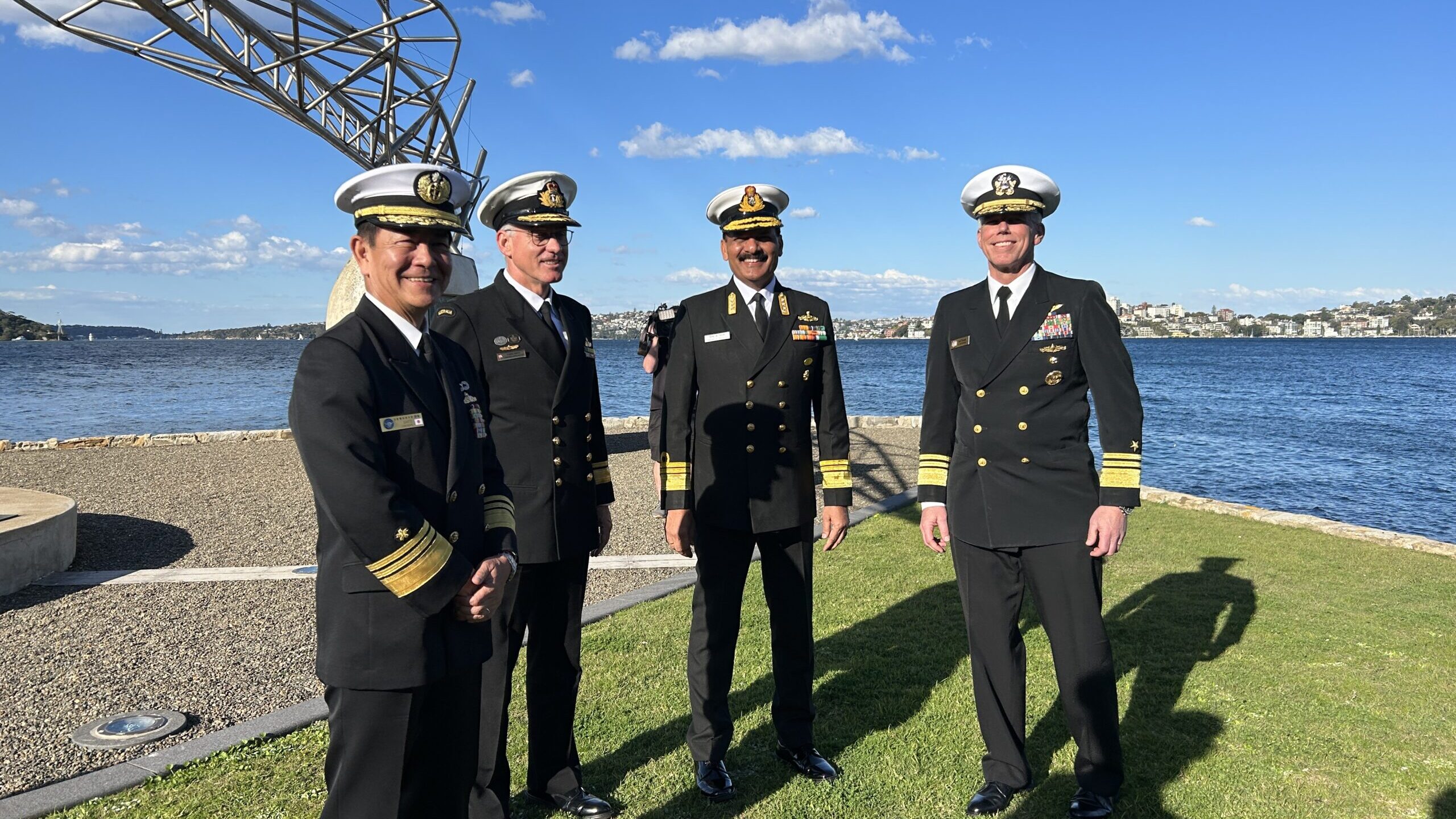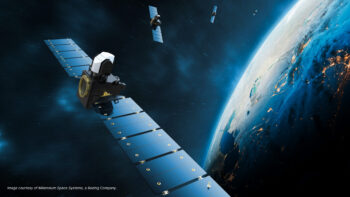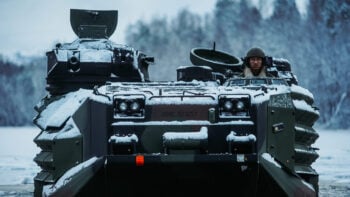
At HMAS Kuttabul in Sydney Harbour are Vice Adm. Akira Saito, commander of the Japanese Maritime Self-Defense Force; Rear Adm. Christopher Smith, commander of the Australian Fleet; Vice Adm. Dinesh Tripathi, commander of Western Naval Command, Indian Navy; Vice Adm. Karl Thomas, commander of the US Navy’s Seventh Fleet. They spoke at the beginning of Exercise Malabar 2023. (Colin Clark/Breaking Defense)
ABOARD THE HMAS KUTTABUL — Standing at the tip of the home of the Royal Australian Navy’s ancestral home, four admirals representing what could be called the Quad navy demonstrated the easy camaraderie that is building between the services leaders as they labor to create forces that can fight together throughout the Pacific Ocean.
Vice Adm. Dinesh Tripathi, commander of the India’s Western Naval Command — colloquially known the “sword arm” of the Indian Navy — spoke of the bonds between Australia and India forged “in the many great epic battles that have been fought” on the cricket field. The American head of the Seventh Fleet, Vice Adm. Karl Thomas, spoke with respect of his colleague Vice Adm. Akira Saito, “Saito-san,” the commander in chief of the Japanese Maritime Self Defense Force.
But while personal ties and understanding each other’s culture can be crucial to greasing the skids of the wheels of war, at the end of the day the four navies have to be able to fire guns, fly planes, sail ships, intercept communications and engage in electronic warfare in a joint manner to operate efficiently in combat.
Which is why the four men are in Australia this week, to kick off the 10-day Malabar exercise — notably, the first to take place in the Pacific Ocean.
Traditionally held in the Indian Ocean, Malabar brought Vice Adm. Dinesh Tripathi from India’s western coast to Papua New Guinea, via the Solomon Islands and on to Sydney. It was a rare outing for the Indian admiral, who said he had only visited the Pacific once — at Guam — in 2018.
But coming together with his colleagues whose countries constitute the Quad allows “the four nations, the four democracies can work together in the maritime domain and that can send some signals around the world,” Tripathi said.
None of the four men said the increasingly aggressive and well-armed China is the main reason for the exercise. Instead, they all spoke of a “free and open Indo-Pacific” — a phrase which has become code for standing up to China. Still, Thomas made little effort to dance around the topic of China’s aggression in the region, noting he had just visited the Philippines, where days ago a Chinese coast guard vessel aimed a water cannon at a small Philippine boat carrying supplies to an outpost in the South China Sea.
“There’s no country that’s more aware of the challenges being faced right now in the South China Sea than the Philippines. We sail quite regularly in South China Sea as does every one of the nation’s standing here today,” Thomas said. “Being out there to be able to try to maintain some peace, some stability in that area is important to challenge claims that maybe are not — that are in violation or certainly don’t fall in line with the United Nations Commission Law of the Sea. So you have to have to be there to test those excessive claims, you have to do what the US Navy does, which is freedom of navigation ops to contest those excessive claims.”
Beijing has refused to accept the UN Law of the Sea’s tribunal ruling that the PRC has no legal claim to the South China Sea and has persistently threatened, and sometime attacked, Philippine ships and other nationals operating in what it claims as its waters.
Malabar, he said, “gives us that capability and that tactical interoperability, to be able to go up there and sail confidently to ensure that a body of water — the South China Sea, which is close to a tremendous amount of trade — stays free.”
One of the key additions to this Malabar will be Australia’s F-35s, appearing for the first time. P-8 sub-hunting aircraft will also be flying, and subs are taking part.
“It provides a significant opportunity for all of us to operate with a fifth-gen aircraft,” Rear Adm. Christopher Smith, commander of the Australian Fleet, said. “To enable us to get the most out of that exercise, the F-35 was an important part of it and it also provides the Air Force an opportunity to train against some very, very sophisticated ships — and all of the ships that are participating here are very sophisticated high-end warfighting ships.”
Six ships are taking part, two from Australia and India and one each from Japan and the US. India’s newest ship, the INS Kolkata, is the first-in-class of a stealthy guided-missile destroyer and is sailing with the INS Sahyadri, a frigate. HMAS Brisbane’s Hobart Class guided-missile destroyer joins the HMAS Choules, a helicopter and landing craft ship that can carry up to 700 troops from Australia. Japan and America sent guided missiles destroyers: the JS Shiranui, an Asahi-class ship, and the USS Rafael Pearlta, an Arleigh Burke class ship.
Both the Indian and Japanese Navy stopped at the Pacific island states of Papua New Guinea and Solomon Islands on their way here.






















